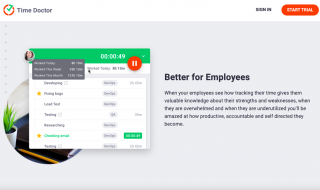
Unraveling the mystery behind why employees decide to leave their jobs is crucial for any organization aiming to cultivate a thriving, engaged workforce. Employee attrition not only disrupts the flow of operations but can also significantly dent morale and increase operational costs related to hiring and training new staff.
Understanding the root causes of attrition and its consequences is the first step toward developing effective strategies to retain top talent and maintain a positive workplace environment. In this blog, we’ll explore essential tips for uncovering the underlying reasons for employee turnover and the impact it has on organizations, providing leaders with the knowledge to foster a more stable and satisfied workforce.
Know The Difference Between Turnover And Attrition
Before delving deep into the strategies to manage employee departure, it’s critical to distinguish between the terms ‘turnover’ and ‘attrition’, as both are often misunderstood and used interchangeably. Both can lead to a company losing employees, but they are distinct concepts. Turnover is when employees voluntarily leave the company, while attrition refers to the natural process of employees leaving the organization due to retirement or death. This distinction is important because each requires a different approach to address it effectively.
Conduct Exit Interviews
Exit interviews are an excellent opportunity to gather valuable information directly from departing employees. These interviews allow organizations to gain insights into the reasons behind employee departures, providing useful data for analyzing trends and patterns. By conducting exit interviews, companies can understand what factors influenced the employee’s decision to leave and identify areas for improvement. It also offers an opportunity to receive honest feedback that employees may not have expressed during their tenure.
Utilize Employee Surveys
Employee surveys are another useful tool in uncovering the causes of attrition. They allow organizations to gather information from current employees on various aspects of their job satisfaction, work-life balance, compensation and benefits, and career development opportunities. By analyzing the responses, leaders can identify areas of concern and take corrective action to improve overall employee engagement and retention.
Review Performance And Engagement Data
Reviewing performance and engagement data can also provide insights into employee attrition. An analysis of performance reviews, attendance records, and other metrics can help identify any patterns or trends that may indicate dissatisfaction among employees. This data can then be used to develop strategies for addressing these issues and improving retention.
Foster Open Communication
Open communication is crucial in any organization, especially when it comes to employee attrition. Encouraging employees to openly communicate their concerns, ideas, and feedback creates a sense of transparency and trust within the workplace. It also allows leaders to address any potential issues before they escalate into reasons for employee turnover.
Offer Attractive Compensation And Benefits
Compensation and benefits are essential factors in retaining top talent. Companies that offer competitive salaries, comprehensive benefits packages, and opportunities for growth and development are more likely to retain their employees. Conducting regular market research to ensure your compensation and benefits packages are in line with industry standards is crucial in attracting and retaining skilled employees.
Employee attrition can have significant consequences for organizations, but understanding its causes is the first step in managing and reducing turnover. By utilizing strategies such as conducting exit interviews, utilizing employee surveys, reviewing performance data, fostering open communication, and offering attractive compensation packages, leaders can gain insights into the underlying reasons behind attrition and take proactive measures to retain their top talent.





